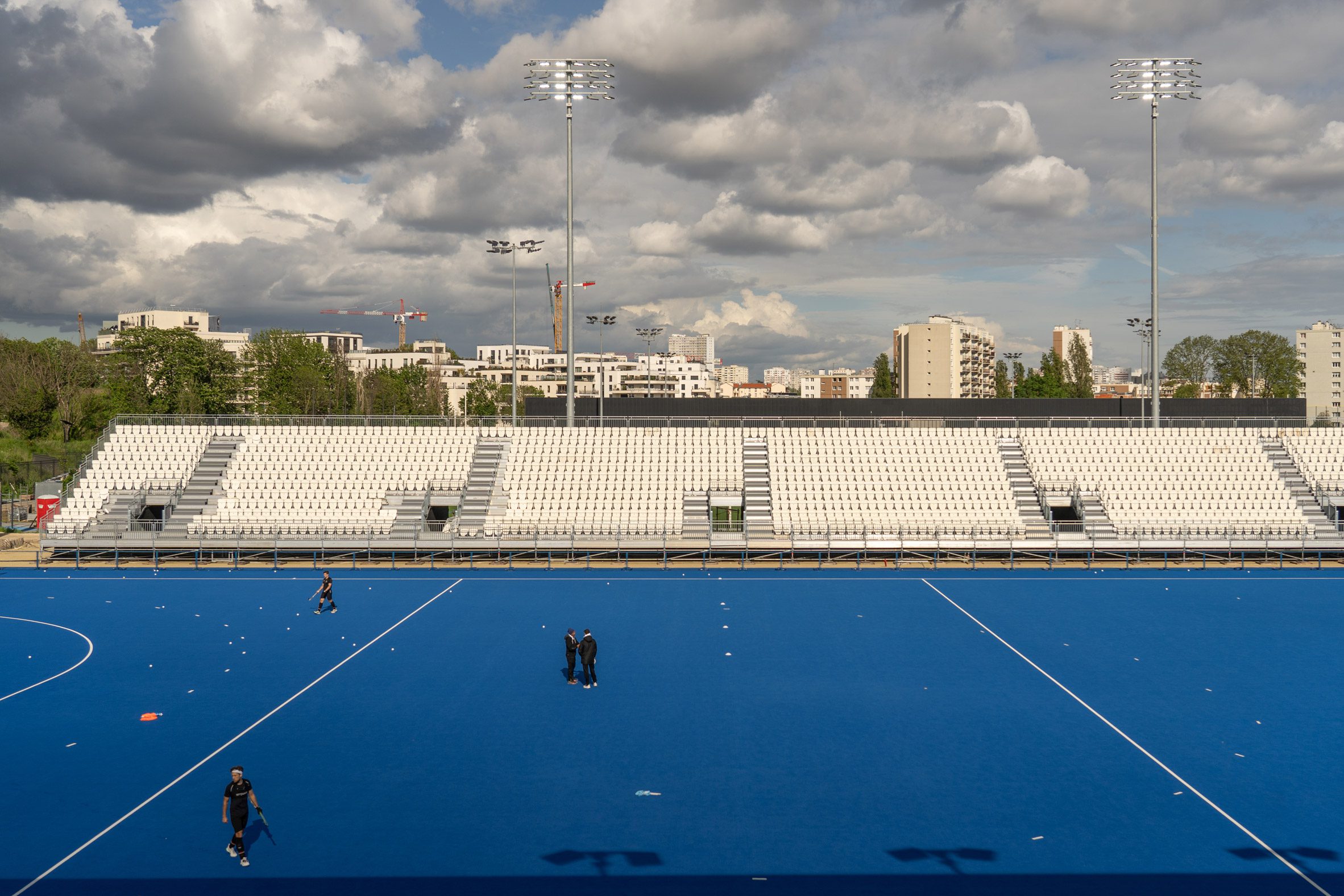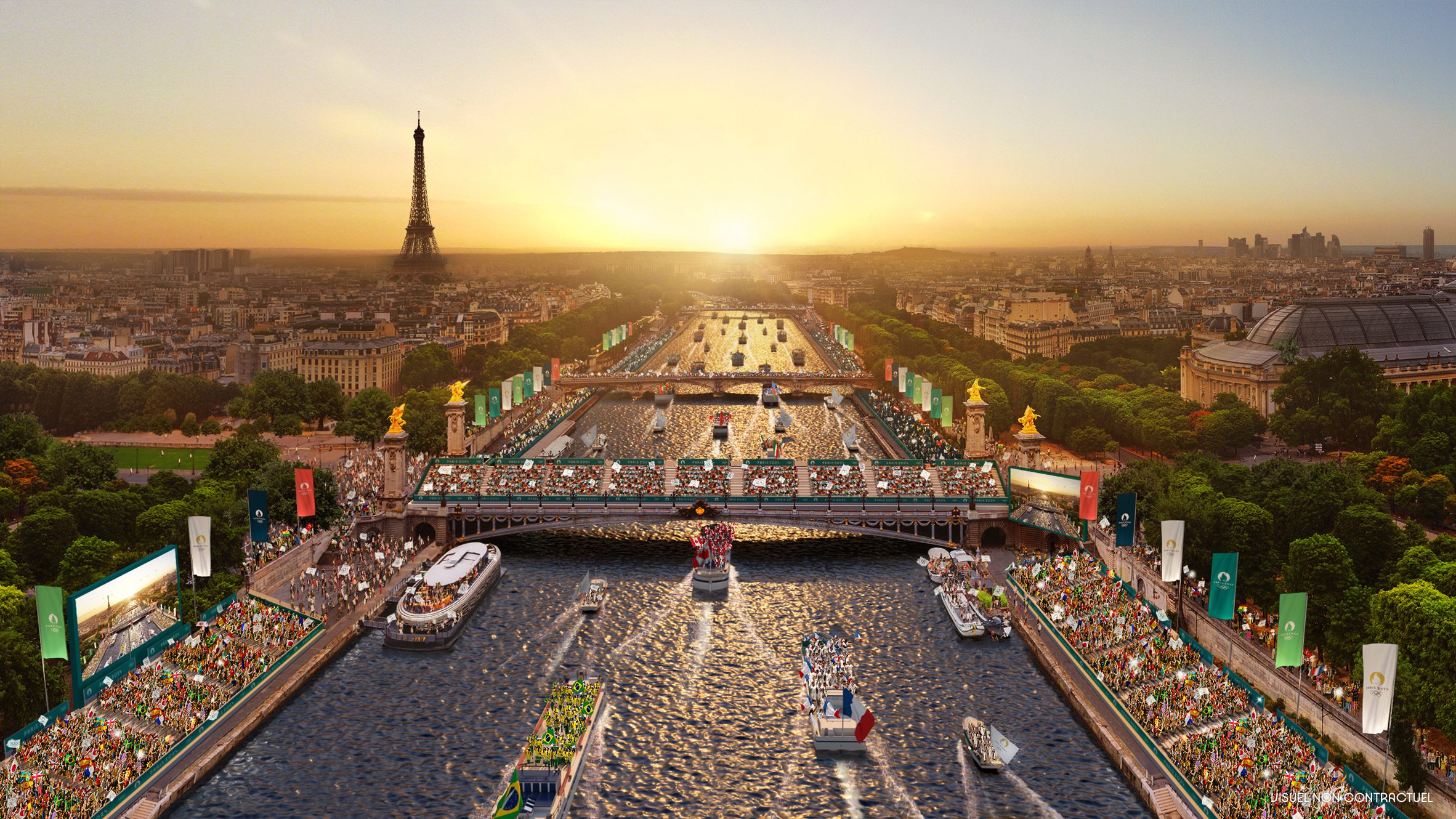The race to reduce the Olympic Impact
Today we launch Olympic Impact, a series investigating whether the Paris 2024 Olympic and Paralympic Games can be the blueprint for sustainable major sporting events. Nat Barker sets out what to expect. In this series we will examine in detail how Paris has sought to minimise the environmental footprint of the games and use it as
The post The race to reduce the Olympic Impact appeared first on Dezeen.

Today we launch Olympic Impact, a series investigating whether the Paris 2024 Olympic and Paralympic Games can be the blueprint for sustainable major sporting events. Nat Barker sets out what to expect.
In this series we will examine in detail how Paris has sought to minimise the environmental footprint of the games and use it as a vehicle to drive improvements in the city.
Hearing from those involved in organising the games and those scrutinising, we'll consider the legacy of Paris 2024 – is this a turning point that puts major sporting events on a more sustainable path?
Half the carbon of London and Rio
Friday will see the opening ceremony of the 33rd Olympiad float down a newly clean River Seine, if all goes to plan. It will be the first time the ceremony has been held outside a stadium – but that will not be the only first at this Olympic and Paralympic Games.
This will also be the first edition of the games organised to a carbon budget. Having moved away from early messaging pledging carbon neutrality, Paris 2024 has a target to emit no more than 1.58 million metric tonnes of CO2 equivalent – halving the carbon footprint of London 2012 and Rio 2016.
If the target is met emissions will be even lower than for Tokyo 2020, which took place without overseas spectators as a result of the Covid-19 pandemic. It has been widely touted as the most environmentally friendly Olympics ever.
The most obvious consequence of this aim is the decision to avoid constructing numerous buildings, which have often defined previous games. Instead, existing buildings have been used wherever possible.

The relatively small number of new buildings were designed with a focus on less polluting materials such as timber, with additional elements like spectator seats made from recycled plastic.
While we associate recent Olympics with impressive, contemporary architecture, the games have a forgotten tradition of renovation and reuse. The first modern Olympics in 1896 took place in the restored, 2,000-year-old Panathenaic Stadium in Athens.
The main venue for the next games, held in Paris, was an adapted existing stadium, as was Paris 1924. A hundred years on, the Yves-du-Manoir has been remodelled again by Celnikier Grabli Architectes and OLGGA Architectes to host the hockey contests at Paris 2024.
At London 1948, dubbed the "Austerity Games" because it took place amid the harsh economic conditions following world war two, no new venues were built and athletes stayed in existing accommodation.
Paris 2024's minimal construction agenda may therefore be seen as a revival of an old legacy.
Does it go far enough?
However, this lack of new venues does not mean that the Olympics have not changed Paris. Under Anne Hidalgo's mayoralty, the French capital has aimed to position itself as a global leader on sustainability – and that is undoubtedly the image it wants to convey to the world with these games.
The Olympics has been used as a catalyst to accelerate a number of other sustainability-related initiatives in the city: planting trees, building protected cycle lanes, extending the Métro and, significantly for this week's opening, cleaning up the Seine.
It has not all gone smoothly – the Métro extension is far from finished and it's still not certain that the river will be clean enough to host swimming competitions as hoped, but it's hard not to be impressed with the level of ambition shown.
Parisians may take a different view. There have been widespread accusations of gentrification and social cleansing, particularly around the athletes' village.
The criticisms have only been fuelled by revelations that thousands of homeless people were bussed out of the city in recent weeks along with posters on the Métro encouraging locals to work from home during the games.
Sustainability experts are also not convinced. Not-for-profit climate watchdog Carbon Market Watch has complained about a lack of transparency over emissions calculations methodology and Paris 2024's progress against its targets since they were released in 2018.
There has also been skepticism around carbon offsetting and questions raised about the compatibility of the event's climate aims with its sponsors, which include an airline and a steel manufacturing multinational.
More fundamentally, doubters argue that halving emissions still isn't nearly enough. While a dramatic improvement on recent Olympiads, 1.58 million tonnes of carbon dioxide is still roughly equivalent to the annual emissions of 172,000 French citizens.
Paris 2024 as a turning point
Nine years ago, this city was where the landmark international treaty to limit global temperature increases known as the Paris Agreement was drafted. That document was referenced in Paris's Olympic bid, which promised "a model of environmental excellence in line with the historic Paris Agreement on climate".
Carbon Market Watch came back to the treaty in its verdict on Paris 2024. "Ultimately, however successful these actions may be, broader, fundamental changes must take place if the Olympics is to comply with a future that does not hurdle over the 1.5°C Paris Agreement temperature barrier," it said.
While the Olympics has focused on the city, flying remains the big issue. Around 1.5 million spectators are expected to descend on Paris during the games, with most travelling by air.

Carbon Market Watch and others argue that events that involve burning so much jet fuel are simply incompatible with planetary boundaries – they want to see future Olympics spread across multiple cities to reduce long-distance travel.
In some ways, the Olympics is the perfect testbed for "environmental excellence", to borrow the Paris 2024 bid's term. After all, this is the forum in which humans seek to push at the boundaries of our species' capabilities – to do what we haven't done before, to break records.
But, in another way, elite sports are nothing like decarbonisation; they are all about fine margins and incremental gains, whereas the climate challenge demands vast improvements on a massive scale. There are no gold medals to be won here. Will we do it anyway? Can we?
The illustration is by Capucine Mattiussi.

Olympic Impact
This article is part of Dezeen's Olympic Impact series examining the sustainability measures taken by the Paris 2024 Olympic and Paralympic Games and exploring whether major sporting events compatible with the climate challenge are possible.
The post The race to reduce the Olympic Impact appeared first on Dezeen.
